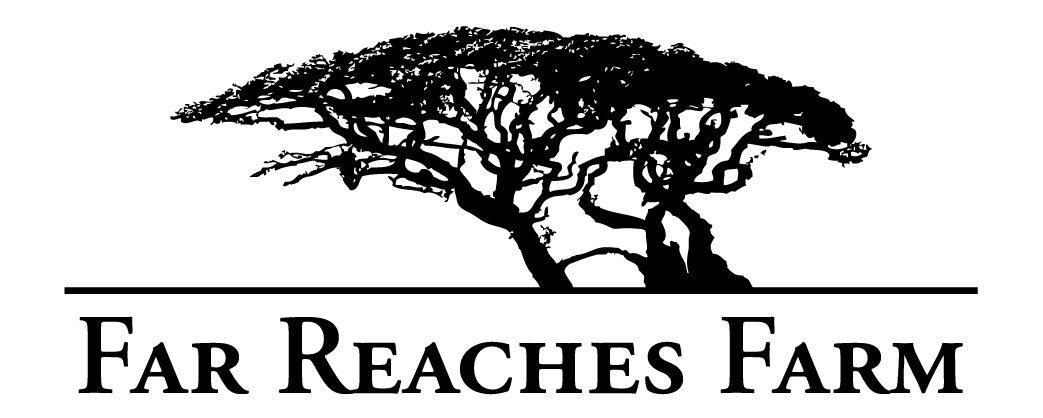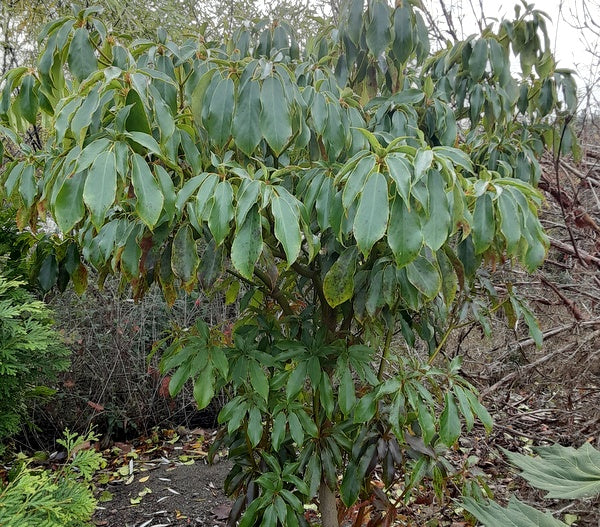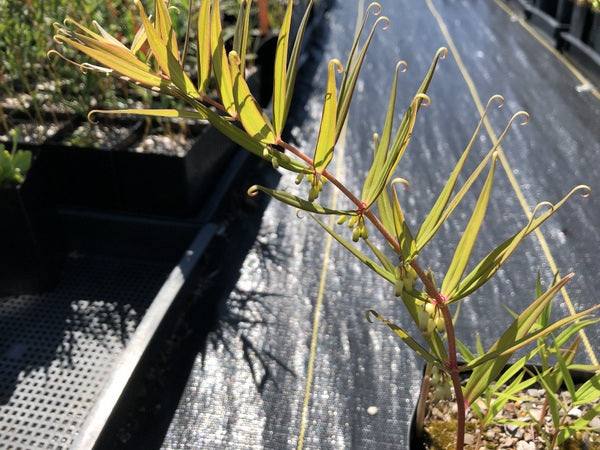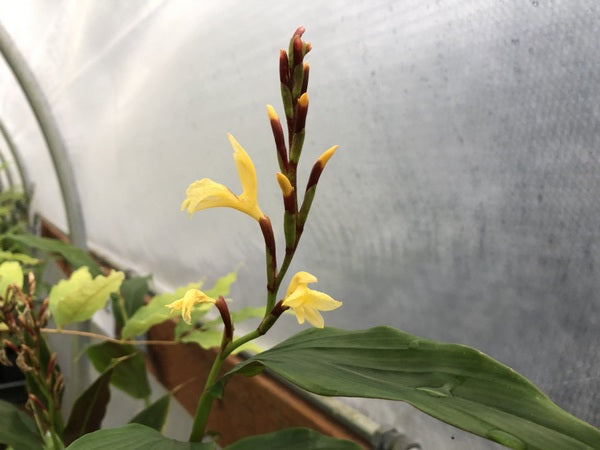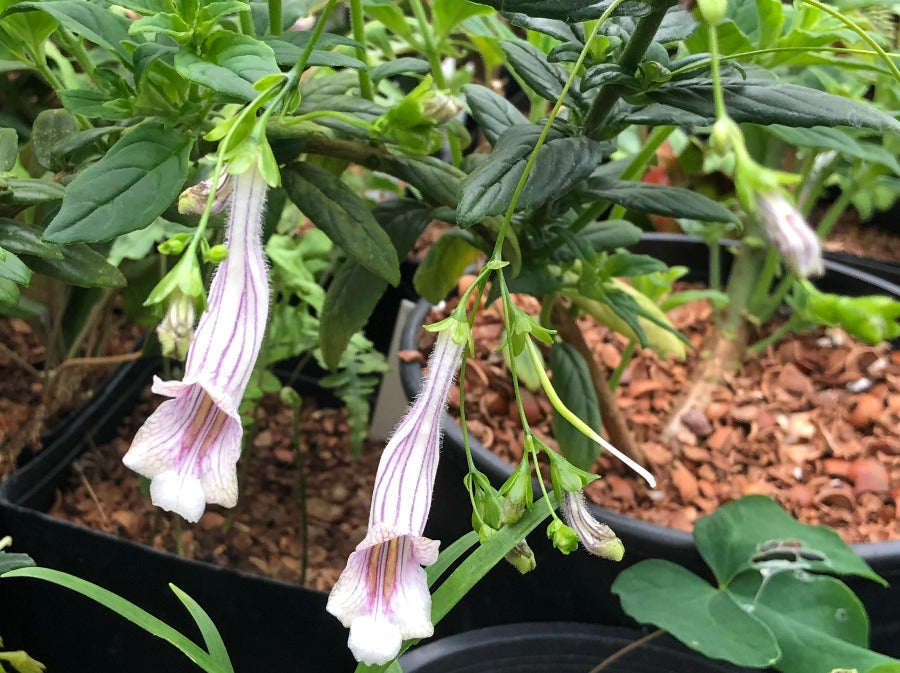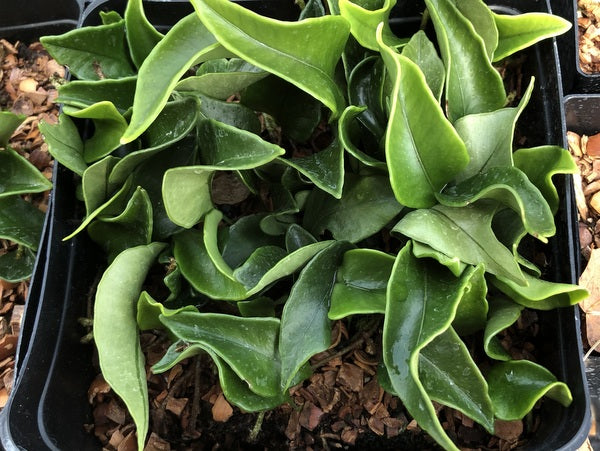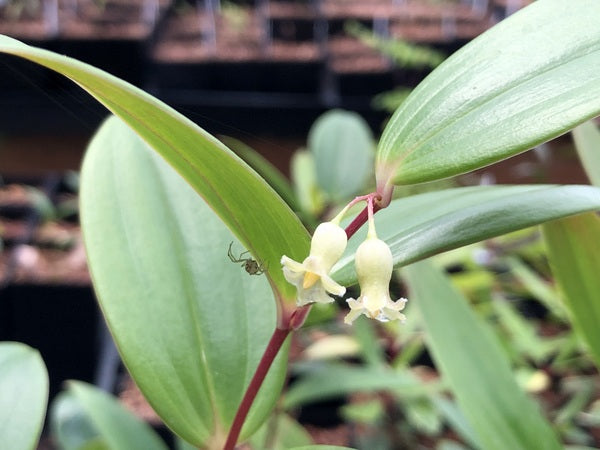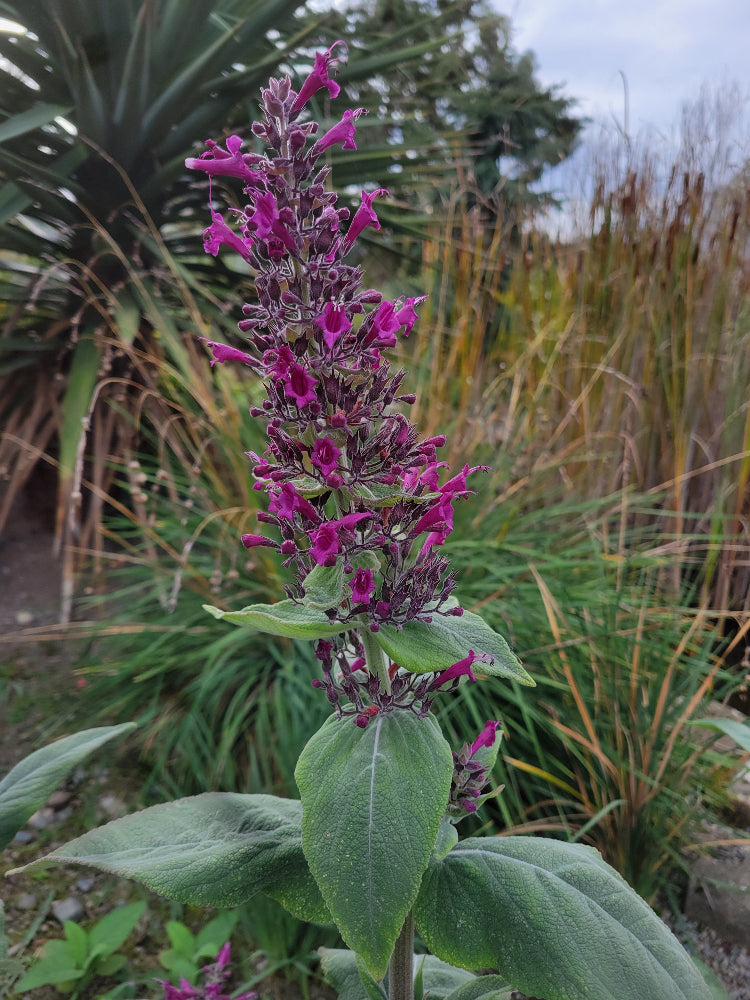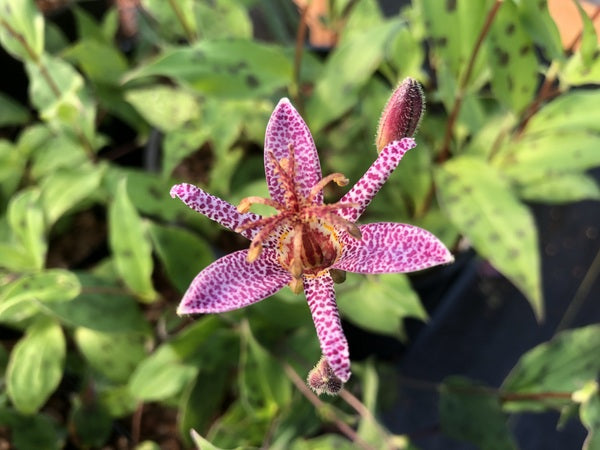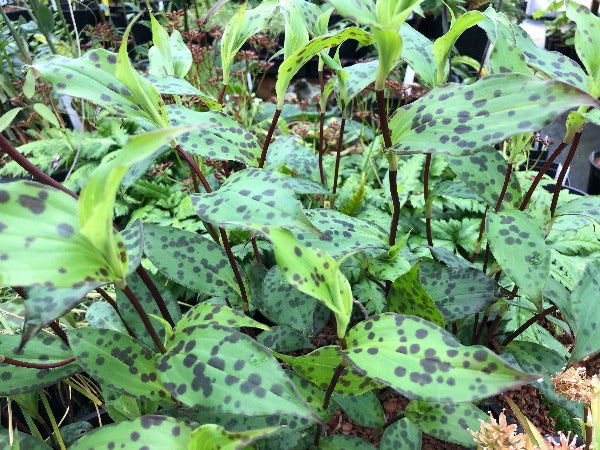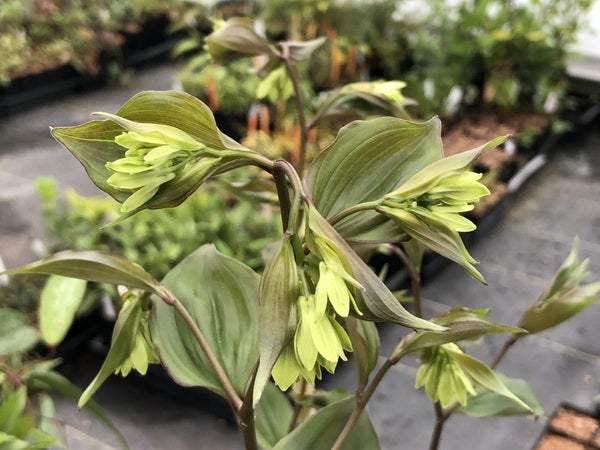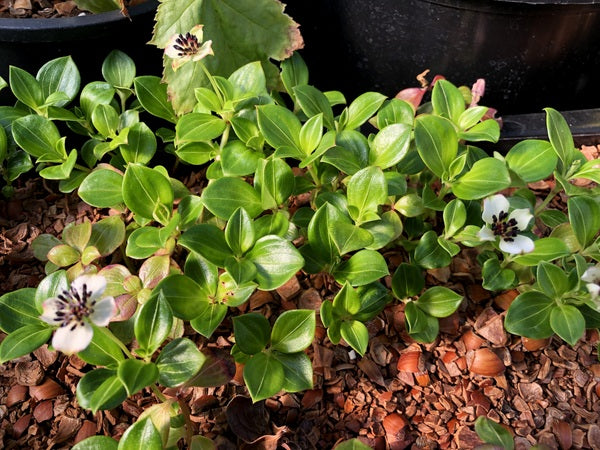Sort by:
86 products
86 products
One of the tall verticillate species in China, this was growing among the branches of a striking shrubby Symplocos just below the mountain summit. The leaves on this species are arranged in whorls like the spokes of a tire. At the leaf base are clustered white and green flowers which turn into red fruit. We like it. A Far Reaches Botanical Conservancy Offering.
Like lots of things we sell here, we searched near and far for the ideal Far Reaches cap and this is it! Distressed 100% cotton in a variety of colors with a sweet antiqued brass buckle for a custom fit. We had it embroidered with our logo by a small shop in town to help support our little local economy.
We love this little wild Chinese blueberry so much that we have exhausted all our (and worthy peers') deductive abilities on trying to put a name to it's button-cute face. Alas we must continue putting out sadly desperate ads in the classifieds in hope of a lead that will result in a future rendezvous. In the meantime we will share tales of our infatuation in physical form with you, our loyal listeners. The diminutive size of the overall plant pairs nicely with the relatively large and thick leaves of roughly spoon shape which are some of the most attractive in the genus. The flowers held in the leaf axils are a dead-ringer for the pneumatic tops of jellyfish, semitransparency and all. Epiphytic in the wild and hardiness is just a guess for now but we will let you know when we get a good test on it.
A Far Reaches Botanical Conservancy Offering
Fern fans we are, fern experts we are not, but we continue to chip away at the imposing taxonomic massif of Pteridophyta in hopes of becoming somewhat conversational in Fern. Currently, we can ask the equivalent of where the restroom is and order beer when talking Asian ferns. This is a creeping fern with long, thin rhizomes ideally suited for weaving through shallow moss on shaded rock faces with small orbicular-ovate evergreen leaves. This has been extremely hardy for us for years in our shade garden, and should fare well in lower zones as well given that Acer griseum was growing nearby.
(Apologies for the second change in species, the limits of species in this group of Lepisorus aren't fully clear, and L. pyriformis having been only recently published is not included in the Flora of China though it fits better than the previously used L. rostratus)
This seemingly non-existent in cultivation species of Mexican holly was collected by FRBC board member Cody Hinchliff in Oaxaca. Glossy evergreen leaves one often expects from a holly, these emerge a rich wine red in these plants that's highly attractive followed by glossy red berries. Growing as a tight rounded shrub of only about 5 feet in a sub-alpine zone that stays fairly moist and under full sun (Though the herbarium sheets suggest it may get larger in different conditions). Hardiness likely somewhere around 7b or 8a, will likely thrive in the Southeast, we are hoping it fares well in the wet PNW winters as well.
A Far Reaches Botanical Conservancy Offering
Our collection from Guizhou in an area famed for its vast diversity and density of Rhododendron species. It was really quite staggering to see the Rhododendrons dominate the landscape even in the fall when all was out of flower. This little Mondo Grass grew as part of the herbaceous understory and had narrow evergreen leaves to 6" with 8" flower stems bearing up to 7 glossy blue-black fruits. Part of our mission here at the nursery is to provide wild-sourced plants in genera that is confused taxonomically in hopes more light can be shed. A portion of the proceeds goes to the Far Reaches Botanical Conservancy.
A collection of this striking Baja endemic mint relative by FRBC board member Cody Hinchliff. A tower of felty, silver-green, arrowhead shaped leaves erupts into a spire of hot pink tubular flowers in autumn provided great late-season pollinator food. Foliage stays evergreen in very mild climates but for us dies back, leaving its well root hardy nether regions to rest until spring. Both leaves and flowers smell of a fruity cleanser, with the flowers being thankfully heavier on the former, darn I was hoping for a whiff of Baja Blast. Extremely drought tolerant and happy in a sunny well-drained spot.
Our collection from Asia of what is likely the first introduction of this exceptional form of this equally exceptionally rare variety. Attractive leaves that are terminally cleft into bilateral lobes. The 12" long hanging panicles of white flowers are the finest in the genus, holding their own among the best of flowering trees. So much better than the straight species. Seed-grown younguns from the original plants. Who's your plant daddy!!!!! Photo credit to Steve Hootman. Proceeds from this offering go to support the mission of Far Reaches Botanical Conservancy.
Extraordinary botanical and ornamental introduction of this evergreen stoloniferous Dogwood. Allied to the northern deciduous Cornus canandensis, C. unalaschkensis and C. suecica, this was discovered in the 1930's by Frank Kingdon Ward on high ridges in northern Burma, now Myanmar. This was never introduced to cultivation and it remained the mythical lost Cornus of Kingdon Ward for 80 years until English botanist Keith Rushforth rediscovered it in Myanmar growing in moss under Rhododendrons and Acer wardii and managed to introduce a handful of clones. We are fortunate to have four clones and we much admire the glossy evergreen leaves and white-bracted flowers with their dark chocolate stamens. This has proved hardy for us in our Zone 8a garden and we have hope that given its crazy disjunct location not far from the Tropic of Cancer, that this might be adaptable to the warmer evenings and humidity of the Southeast and East Coast but this remains to be seen. Extremely rare. A Far Reaches Botanical Conservancy Offering. Proceeds from this offering go to support the mission of Far Reaches Botanical Conservancy.
*Limit of 2 per customer*
